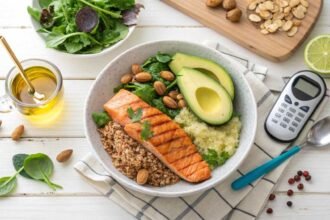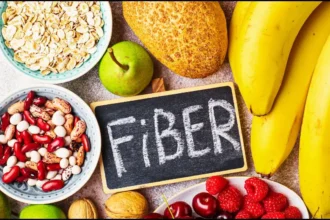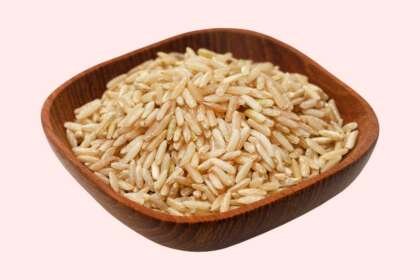Samosas are extremely delicious due to their crunchy, flaky qualities and amazing taste. They are a must-eat snack in South Asia, loved by everyone.
These small triangle pastries are filled with the most delicious combinations of pickled vegetables, lentils or meat and are always a hit at parties, street stalls and family gatherings.
This article talks about the health benefits, risks and nutrition information of samosas. We’ll go into detail about nutrients, talk about how deep-frying affects calories and fat, and look at the harms of refined carbs and trans fats.
By taking a closer look at the nutrition facts, you can learn how to savor samosas mindfully while still eating a balanced diet.
Health Benefits of Samosas
Nutrient-rich filling ingredients
Samosa may be famous for its crispy fried skin, but its stuffing can actually be quite nutritious. Classic veggies like potatoes, peas and lentils are packed with vital vitamins, minerals and fibre.
According to the information gathered from various sources, including Eat This Much and Prospre, a typical samosa made with potatoes and peas can give you a good dose of vitamin C, folate and potassium. [Source] [Source]
Potential benefits of cumin and other spices
Apart from the vegetables, the mix of spices in samosas can be really good for your health. Cumin, a key ingredient in most samosa recipes, has been researched for its anti-inflammatory and antioxidant properties.
A review in the journal Nutrients also details how cumin may help reduce inflammation and oxidative stress, both of which are linked to serious diseases like heart disease and cancer.
Expert opinion
Registered dietitian Emily Brown mentions that although samosas should be eaten in moderation because they are fried, their fillings contain valuable nutrients. The mix of vegetables, pulses and spices like cumin makes samosas a healthier option than other fried snacks or appetizers.
Brown says it’s important to control how much you eat and recommends eating just one or two samosas at a time to balance out the good ingredients and the not-so-healthy fried bits. She also points out that samosas can be a healthy addition if you eat them as part of a complete diet.
Samosa fans can learn about all the delicious ingredients and flavors in their favorite snack, so they can enjoy it for more than just its looks.
Potential Downsides of Samosas

High calorie and fat content
Even though the samosa filling can be delicious, it also has some disadvantages as it is fried. The calories and fat in a deep fried samosa can be quite high with around 300-350 calories and 15-20 grams of fat. Eating too many of these can lead to weight gain and other health problems.
Refined carbohydrates from the pastry crust
Additionally, pastry crust is usually made with fancy carbs like white flour or semolina. These fancy carbs can cause your blood sugar levels to spike really quickly and then drop suddenly, causing you to feel extremely hungry and eat too much.
Dealing with this cycle can make it harder to control your weight and may also increase your chances of developing insulin resistance and type 2 diabetes in the long run.
Risk of trans fats
When it comes to deep-fried samosas, there is also the issue of trans fats depending on the oil used. According to a study in the Journal of the American Heart Association, even a little bit of trans fat can increase the chance of heart disease and mortality.
Expert opinion
Dr. Sarah Johnson, a cardiologist at City Hospital, advises that it’s probably OK to eat fried foods like samosas from time to time, but eating them regularly can be bad for your heart.
The high calories, saturated fat and potentially harmful trans fats from frying can lead to higher cholesterol levels, inflammation and a greater chance of heart problems and stroke.
Dr. Johnson simply says that enjoy samosas in moderation. She suggests consuming them in moderation and balancing them with healthier options in your diet.
Nutrition Facts of Samosas
To fully understand the nutritional impact of samosas, it’s important to examine their macronutrient and micronutrient composition. A standard vegetable samosa (approximately 100g) contains:
- Calories: 320
- Total Fat: 18g (28% DV)
- Saturated Fat: 3g (15% DV)
- Cholesterol: 0mg (0% DV)
- Sodium: 430mg (18% DV)
- Total Carbohydrates: 36g (12% DV)
- Dietary Fiber: 3g (12% DV)
- Total Sugars: 1g
- Protein: 4g (8% DV)
While samosas are a good source of fiber, their high fat, calorie, and carbohydrate content make them a food to be consumed in moderation.
Comparison to other popular fried snacks or appetizers
Samosas are a little lighter in calories and fat than other fried appetizers like mozzarella sticks or jalapeno poppers, but they have more carbs because of the pastry crust.
However, overall, the nutritional difference is very minimal, so enjoy all your fried snacks in moderation.
Impact of portion sizes and frequency
It is good to keep track of how many samosas you are eating. They may not seem like much, but it’s easy to overeat and consume too many calories, fat and carbs.
Eating a lot of fried foods like samosas can lead to weight gain, high cholesterol and other health problems.
Expert tip
“Moderation is key when enjoying foods like samosas,” says nutritionist Sarah Lee. “I recommend limiting yourself to one or two samosas at a time and balancing them with nutrient-rich foods like fruits, vegetables, whole grains and lean proteins throughout the day.”
If you know what’s in samosas, compare them to other foods and see how much you eat, you can decide whether they fit into a healthy diet.
Healthier Alternatives and Tips
Baked or air-fried samosa options

If you want to enjoy the delicious taste of samosas without worrying about frying oil, you can try baking or air frying them. This healthier option reduces fat and calories while still giving you a crisp and delicious taste.
Substitutions for healthier fillings and crusts
Additionally, if you change some of the ingredients, you can make samosas even healthier. Instead of using regular white flour for the crust, you can try using whole wheat flour.
This will give you more fiber and ensure that the sugar will be released more slowly into your bloodstream. Instead of filling potatoes, you can use dal for the filling. This will give you more plant-based protein and reduce the amount of carbs.
Expert opinion
Chef Anjali Ramaswamy, who is known for her twist on South Asian cuisine, says samosa can be a delicious and healthy dish.
She likes to play with baked or air-fried options, whole grains for the crust, and ingredients like lentils, spinach, or sweet potatoes.
Ramaswamy also recommends trying different flavor combinations to mix things up and get some extra nutrients, like using curried cauliflower and chickpeas as a filling or mixing spicy dal with pumpkin.
Tips for mindful enjoyment
When enjoying samosas, be it the traditional version or the healthier version, it is important to eat carefully and control portions. Health coach Emily Davis offers this advice: “Take your time to really taste the aroma, firmness, and flavor first.
Look at each piece slowly, don’t overfill, and stop when you’re confident that your Please explain the body’s hunger and satiety signals.
If you want to maintain your health and fitness goals without wanting to enjoy the delicious taste of samosas, just use cooking healthy food, change your fishing habits and pay attention.
The Bottom Line
Samosa, that wonderful fried pastry, is loved by everyone in South Asia. They contain tasty fillings that may be good for you, but they are also high in calories, fat, and carbs because they are deep fried. Knowing all this can help you make better choices while eating samosas.
Hey, just a reminder that moderation is key. Enjoy samosas in moderation as a tasty treat from time to time, while maintaining a balanced diet with plenty of healthy foods.
Try baking or air frying them for a healthier cooking option, and experiment with different ingredients to make them even more nutritious.
If you want to make your samosa craving a little more healthy, you can try some baked or lentil-based recipes from trusted cooking websites.
Another option is to contact a dietitian or health care professional for personalized advice on how to incorporate samosas into your specific dietary goals. By choosing wisely, you can enjoy the delicious taste of samosas while taking care of your overall health.












